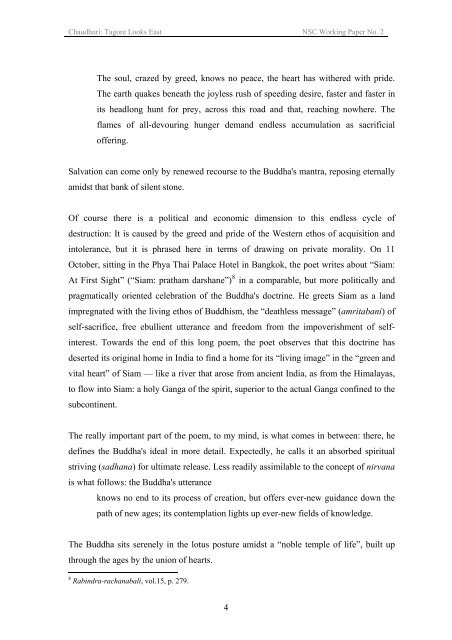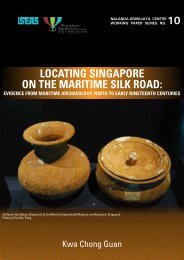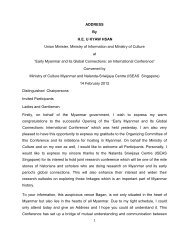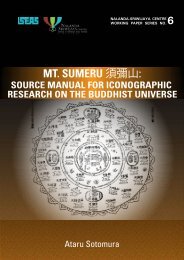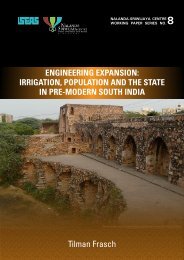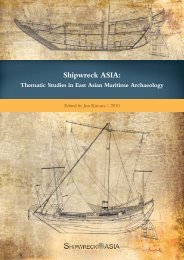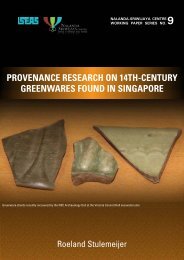2 TAGORE LOOKS EAST - Nalanda-Sriwijaya Centre - iseas
2 TAGORE LOOKS EAST - Nalanda-Sriwijaya Centre - iseas
2 TAGORE LOOKS EAST - Nalanda-Sriwijaya Centre - iseas
- No tags were found...
Create successful ePaper yourself
Turn your PDF publications into a flip-book with our unique Google optimized e-Paper software.
Chaudhuri: Tagore Looks East NSC Working Paper No. 2The soul, crazed by greed, knows no peace, the heart has withered with pride.The earth quakes beneath the joyless rush of speeding desire, faster and faster inits headlong hunt for prey, across this road and that, reaching nowhere. Theflames of all-devouring hunger demand endless accumulation as sacrificialoffering.Salvation can come only by renewed recourse to the Buddha's mantra, reposing eternallyamidst that bank of silent stone.Of course there is a political and economic dimension to this endless cycle ofdestruction: It is caused by the greed and pride of the Western ethos of acquisition andintolerance, but it is phrased here in terms of drawing on private morality. On 11October, sitting in the Phya Thai Palace Hotel in Bangkok, the poet writes about “Siam:At First Sight” (“Siam: pratham darshane”) 8 in a comparable, but more politically andpragmatically oriented celebration of the Buddha's doctrine. He greets Siam as a landimpregnated with the living ethos of Buddhism, the “deathless message” (amritabani) ofself-sacrifice, free ebullient utterance and freedom from the impoverishment of selfinterest.Towards the end of this long poem, the poet observes that this doctrine hasdeserted its original home in India to find a home for its “living image” in the “green andvital heart” of Siam — like a river that arose from ancient India, as from the Himalayas,to flow into Siam: a holy Ganga of the spirit, superior to the actual Ganga confined to thesubcontinent.The really important part of the poem, to my mind, is what comes in between: there, hedefines the Buddha's ideal in more detail. Expectedly, he calls it an absorbed spiritualstriving (sadhana) for ultimate release. Less readily assimilable to the concept of nirvanais what follows: the Buddha's utteranceknows no end to its process of creation, but offers ever-new guidance down thepath of new ages; its contemplation lights up ever-new fields of knowledge.The Buddha sits serenely in the lotus posture amidst a “noble temple of life”, built upthrough the ages by the union of hearts.8 Rabindra-rachanabali, vol.15, p. 279.4


